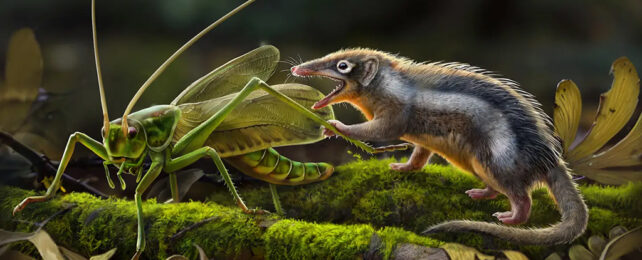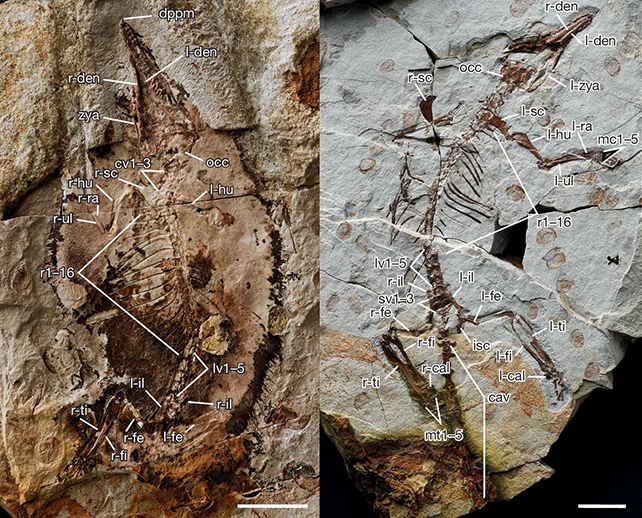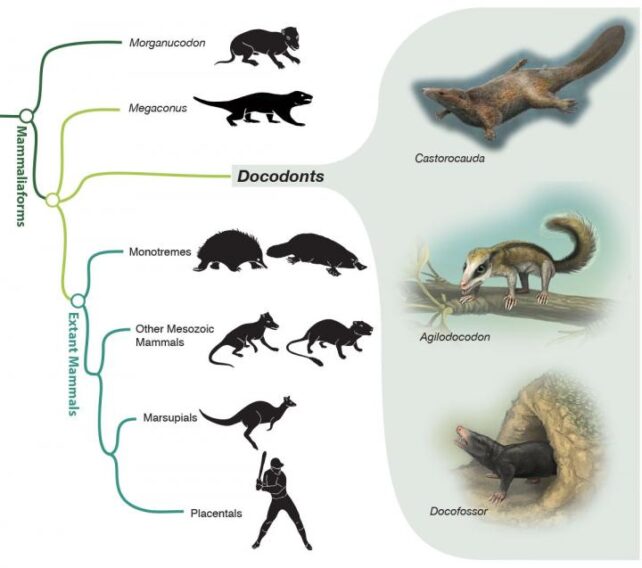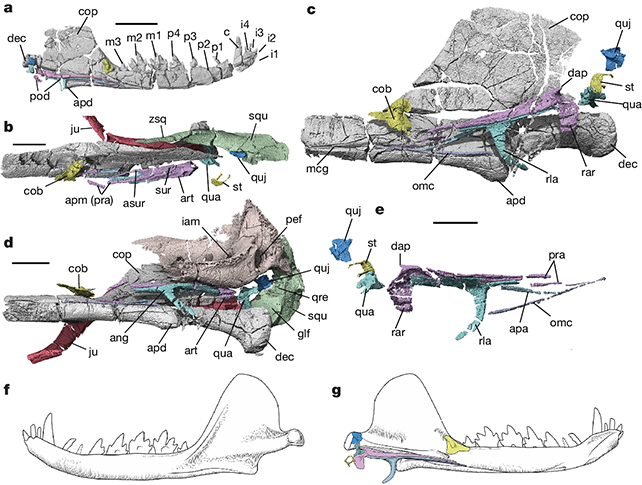ARTICLE AD
 An artist's reconstruction of Feredocodon chowi, one of two newly described species. (Chuang Zhao)
An artist's reconstruction of Feredocodon chowi, one of two newly described species. (Chuang Zhao)
Two new studies of Jurassic-era fossils from researchers in China, the US, and Australia offer new insight into how mammals such as humans evolved – specifically, how we got the ears and teeth that we have today.
There are four fossils in total across the two studies, dating back more than 164 million years. They're all fossils of mammaliaforms, a group that contains mammals and their closest extinct relatives. Three of the four finds are shuotheriids: small, mice-sized creatures that scuttled along with the dinosaurs.
The configuration of the teeth and ears on these shuotheriids has experts wondering about how we got from the time of the dinosaurs to the modern era, where mammals dominate, and how different evolutionary branches link up.
 Two of the fossils analyzed, representing a new shuotheriid species, Feredocodon chowi. (Mao et al., Nature, 2024)
Two of the fossils analyzed, representing a new shuotheriid species, Feredocodon chowi. (Mao et al., Nature, 2024)"Our study questions current theories and offers a new viewpoint on the evolutionary history of mammaliaforms," says paleontologist Patricia Vickers-Rich, from Monash University in Australia.
"We provide vital insights into the phylogenetic relationships and evolutionary trajectories of shuotheriids, little known until recent discoveries in China."
Shuotheriids have puzzled paleontologists since the 1980s: The shape of their individual teeth don't match the equivalent mammals of today.
Here, a closer analysis matched that shape to another group of mammaliaforms called the docodontans, which branched off early from the group of mammals that eventually became our ancestors. So based on these new fossils, the researchers think that shuotheriids should be grouped closer to docodontans.
 Docodontans are extinct mammaliaforms related to modern mammals. (April Neander/University of Chicago)
Docodontans are extinct mammaliaforms related to modern mammals. (April Neander/University of Chicago)When it comes to the ears of the fossils, the researchers identified key features in the middle ear, which gives us mammals some of the sharpest hearing on Earth. This middle ear is thought to have evolved from jaw joints. But broken, poorly preserved fossils have made piecing together that transition difficult.
The second study, comparing an older, more reptile-like mammal fossil to the newfound shuotheriid species, helps clarify the evolutionary transformation from reptiles, with one middle-ear bone, to mammals – which have three.
 Lower jaw and mandibular middle ear of Dianoconodon youngi, the second new species described. (Mao et al., Nature, 2024)
Lower jaw and mandibular middle ear of Dianoconodon youngi, the second new species described. (Mao et al., Nature, 2024)"Scientists have been trying to understand how the mammalian middle ear evolved since Darwin's time," says paleontologist Jin Meng, from the American Museum of Natural History in New York.
"These new fossils bring to light a critical missing link and enrich our understanding of the gradual evolution of the mammalian middle ear."
Both studies are like redrawing a gigantic map of species, removing some of the pinned lines between shuotheriids and other groups, and creating new ones.
This kind of remapping helps to show how traits developed over time, independently or in sync, and from there the different environmental pressures that may have contributed to them.
In other words, the research adds to the how and why of how mammals evolved – all thanks to little scurrying creatures from hundreds of millions of years ago. It's also another reminder of how new fossil discoveries, and new studies of those fossils, can add clarity to evolutionary mysteries.
"Additional specimens and different methods suggest different interpretations," says paleontologist Thomas Rich, from Monash University. "This is how science often works."

 8 months ago
38
8 months ago
38 

